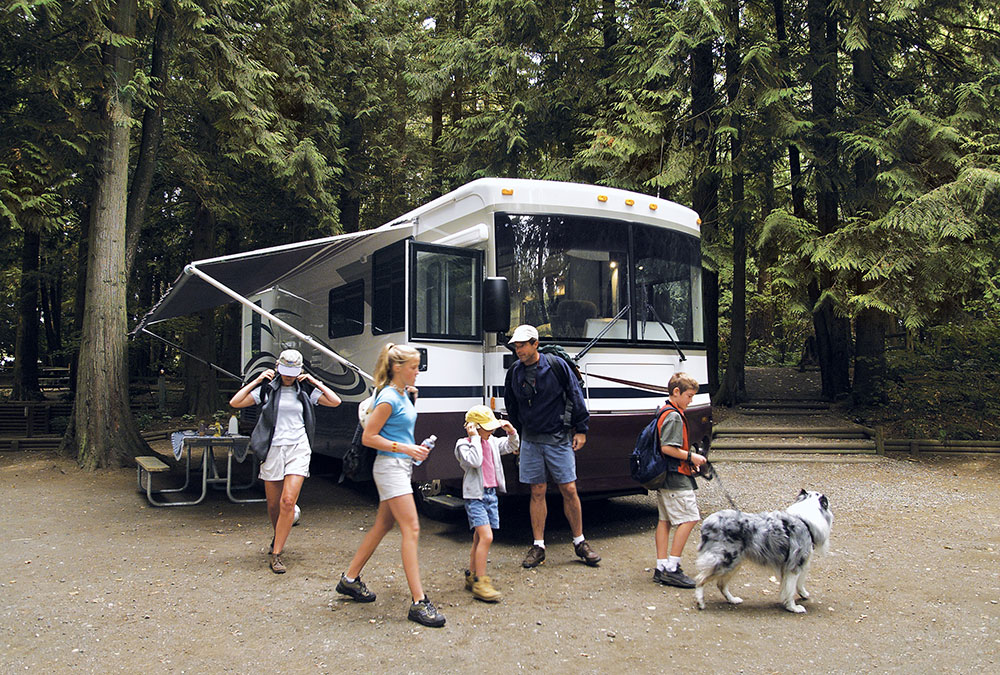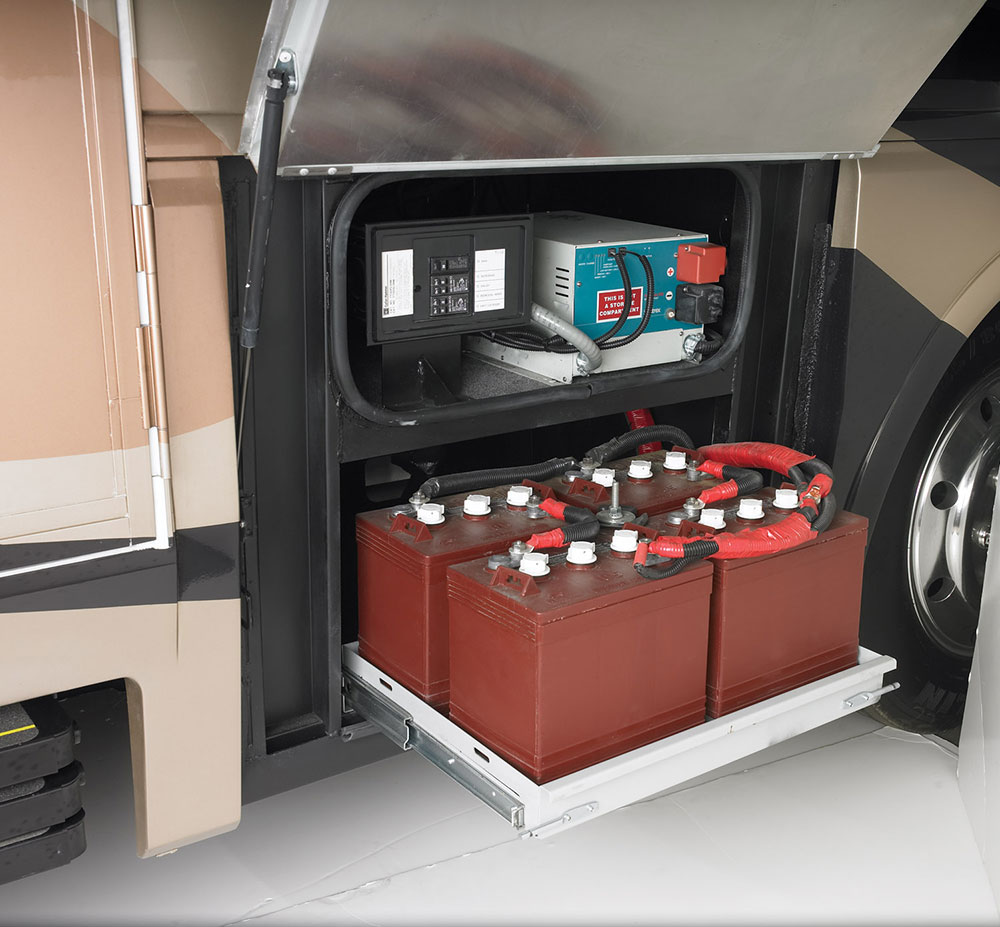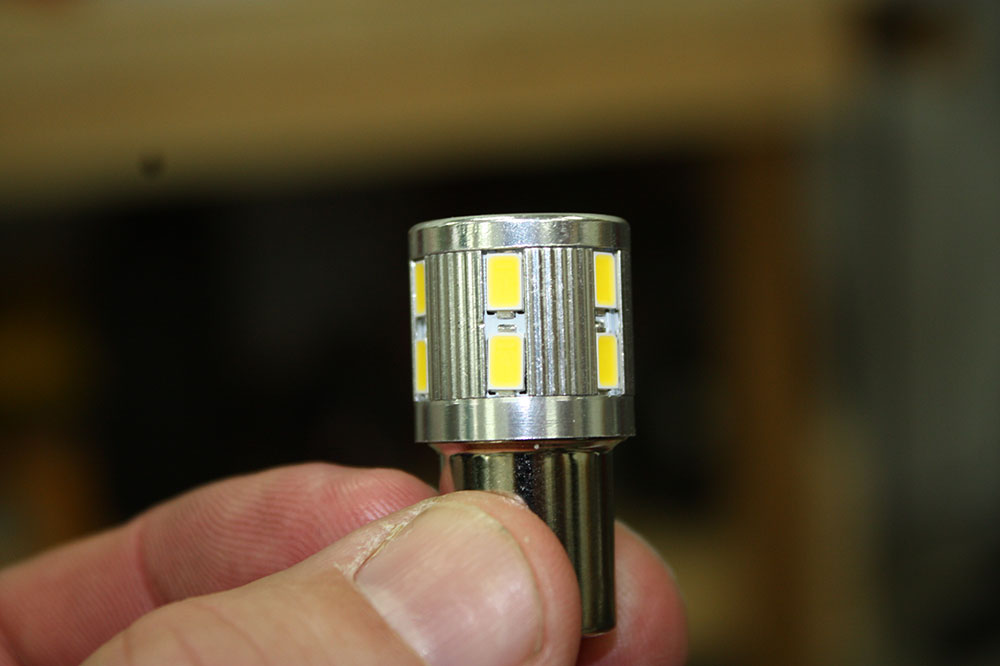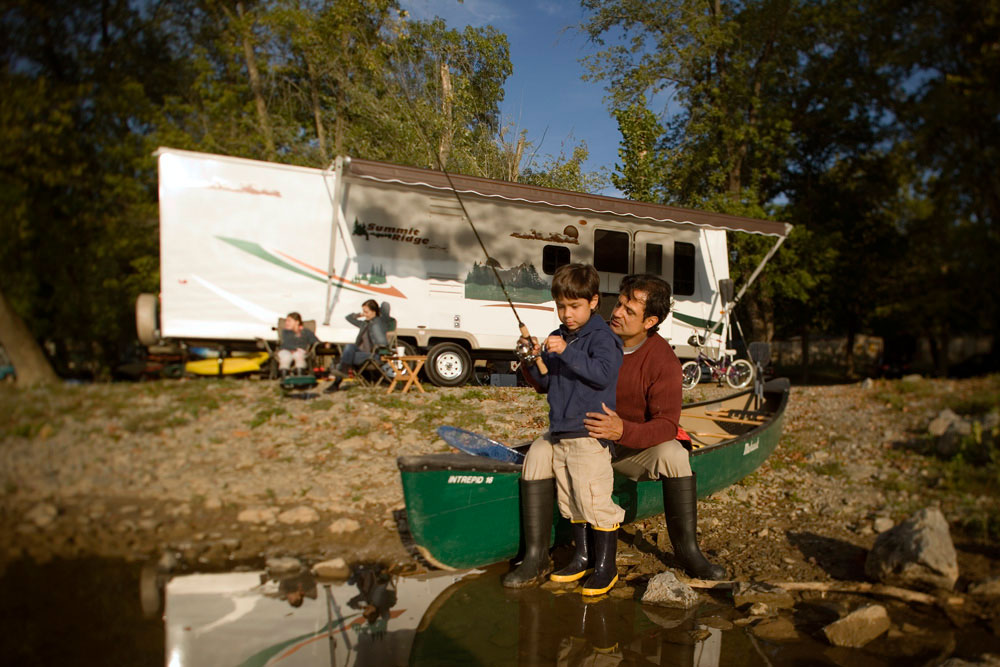Deep Cycle Batteries
Deep cycle batteries are basically a fuel tank for the 12-volt system. We start by understanding amp hours available from our typical batteries. Amp hours are the amount of time our batteries will provide a charge at a certain draw known as amperage. Here are the typical amp hours for batteries at a 25 amp draw:Group 24: 140 minutes
Group 27: 175 minutes
This means you only have about 2.5 hours of usage drawing 25 amps on a Group 24, or just about 3 hours on a group 27. In a 12-volt system, adding a second battery parallel (positive to positive) will double the amp hours. However, connecting two 6-volt batteries in series (negative to positive) will give you 12-volts, but does not double the amp hours!
AGM Batteries
Even Absorbed Glass Mat (AGM) batteries give the same or slightly less amp hours for the corresponding group rating! The advantage of AGM is they are less likely to sulfate, therefore lasting longer. They are also maintenance free, and can be installed sideways in tight compartments. To get higher amp hours, you will need to add more batteries. There are some AGM battery companies, such as Lifeline, that offer a higher-capacity AGM with 330 amp hours on a 12-volt or 692 on a 6-volt, but you would still need two, and these are much higher prices!Battery Condition
Once you understand what kind of batteries you are using, you need to determine the condition of your batteries. Lead acid batteries require a multi-stage charge every month that creates a high voltage “boil” for a specified amount of time and then an equalizing and float stage. Most RV owners simply plug the unit in and leave them, thinking the on-board converter keeps them conditioned. Not so! Battery sulfation is a big problem in the RV industry and most batteries are not operating anywhere near their rated capacity. So if you have batteries rated at 175 minutes for a 25-amp draw and they are sulfated and only providing 60% capacity, you only have 105 minutes. It’s important to get your batteries tested correctly. A digital tester is not the answer; the only way to truly test battery capacity is to charge them up and test with a 25 amp draw machine and document the time it takes to bring them down.One product on the market that helps condition batteries is the Battery Minder, available online at www.batteryminders.com or from your local dealer. This product sends high-impact waves into the battery and breaks up the sulfation and will extend the life of your batteries as well as the available amp hours.
Drawing Power
Lastly, it is important to figure out what is drawing power from your batteries. Typical 12-volt components are interior lights, water pump, vent fans, and any appliance that is running on LP as they will draw battery power to open and close the gas valve and other operations. A refrigerator with an icemaker usually uses 12-volt power to heat the tray before ejecting the cubes. Smaller inverters will draw power from the battery to run the TV and DVD player. Larger inverters will draw a lot of power to run a residential refrigerator and other appliances. You can spend a lot of time trying to calculate the amp draw from each appliance and the amount time each gets used every day. However, a basic understanding of good battery capacity and what the “energy hogs” are is easier.Tips for Conserving 12-Volt Power
Now that you know the basics, we’ve got some other tips on how to maximize your power efficiency when camping!1. Change your routine! Adjust your activities according to natural light, read during the day, go to bed earlier, and get up earlier when natural light is available.
2. Use more portable, rechargeable solar lights. There are several products on the market for solar LED string lights for outside, rechargeable puck lights for inside, and lanterns. Instead of sitting inside reading, eating, or playing games, go outside and use the campfire light, portable lanterns, and LED string lights. It’s all free power!
3. If you are camping in colder temperatures, invest in a portable catalytic heater that runs off a small bottle gas canister. This provides safe supplemental heat without CO2 gassing and extends the propane and 12-volt power.
4. Change to LED bulbs. Incandescent bulbs used in the older light fixtures draw 1.5 amps; halogens draw about 1 amp. The newer LED bulbs draw about .01 amp (ten times less)! And they provide better light so you don’t have to have as many on!
5. Use the campfire or grill as much as possible. Make coffee with an old-fashioned percolator or French Press—you’ll love the taste! Heat water to wash dishes, and cook as much as possible on the campfire.6. If you are using an inverter to charge accessories such as cell phones and laptops, unplug then after they are charged. An empty cord will still draw power if plugged into an outlet.
7. Charge all electronic accessories such as cell phones and laptops from the automotive battery system while driving.
8. Manage heat and cool temperature the old-fashioned way! Open windows for cross-ventilation, utilize shade from trees, determine the cool mornings and hot afternoons, and park accordingly.
With a better understanding of your battery capacity, proper maintenance, and these tips on conserving 12-volt power, you will be able to extend your boondocking, dry camping, or off-the-grid experience for a much longer time.Need some more information on boondocking? We’ve got a great free video on Running 12-Volt Appliances on Generator While Boondocking.





good article!
More on boondocking
Some great advice, but really "An empty cord will still draw power if plugged into an outlet" make no sense for DC. The circuit is not complete, so there is no current, so there is no power being drawn down.
Good general information.
Two questions: 1) I installed 4 solar panels and manage them with an MTTP controller. I'm charging in-parallel 2 AGM 100aH batteries. When in storage, should I keep the solar system charging the batteries? 2) I've purchased two inverters, one pure signwave and the other a modified signwave inverter, both have the same output rating of 2000W sustained / 4000W max rating. The input low voltage protection voltage is rated at 10.0VDC +/- 0.5VDC, +/- 0.5VDC, and auto restart for both at 12.6VDC +/-0.2VDC. Niether inverter can run a 600W drip coffee maker, they just cut out. Configuration is a single inverter being the only draw on the fully charged 2 AGM parallel configured batteries. Matter of fact, I turned on the solar which is charging batteries at 13.5VDC and inverters still cut out. Both Inverters work fine except for coffee maker, toaster, or microwave. What could be the problem?
I needed help to troubleshoot and fix awning lights that are not working
I would like my 2 6-volt battery system to be converted to 4 batteries. I would also upgrade my 80 watt solar system to two 100 watt panels. My batteries are only 3 months old. Can I add two more batteries of the same make?
I have witnessed a 12V drain on my Aux battery while boondocking. I've gone crazy looking for the culprit. I was beginning to think it's a problem with the inverter (is that the right term?). We have an onboard generator to restore the Aux battery so we can usually recover... however, we try to kill all things that could draw during the night. And sometimes we use the A/C at night on generator. Even though the generator is running the whole time halfway through the night (and only sometimes) the Aux battery will show as Low and it starts to impact things like the LED lights dimmed or the AC stopping. We have even witnessed this when we are plugged into 30AMP power. I don't have power going to the propane valve or the C02 sensor at the moment. I thought the radio might be the culprit too since that seems to kill the battery fairly fast... but this is all while we have generator power.... so is something not switching to that source of power correctly? Any thoughts?
Considering a solar charger to hook up during down times to charge batteries. Can this be done and what do you recommend. Don't necessarily think it has to be big.
I bought a brand new battery for the coach. I have everything off but the battery is almost dead. I want to know do i need a new battery again? The water level is full. Can i convert to lithium battery or should i get a stronger battery. Help!